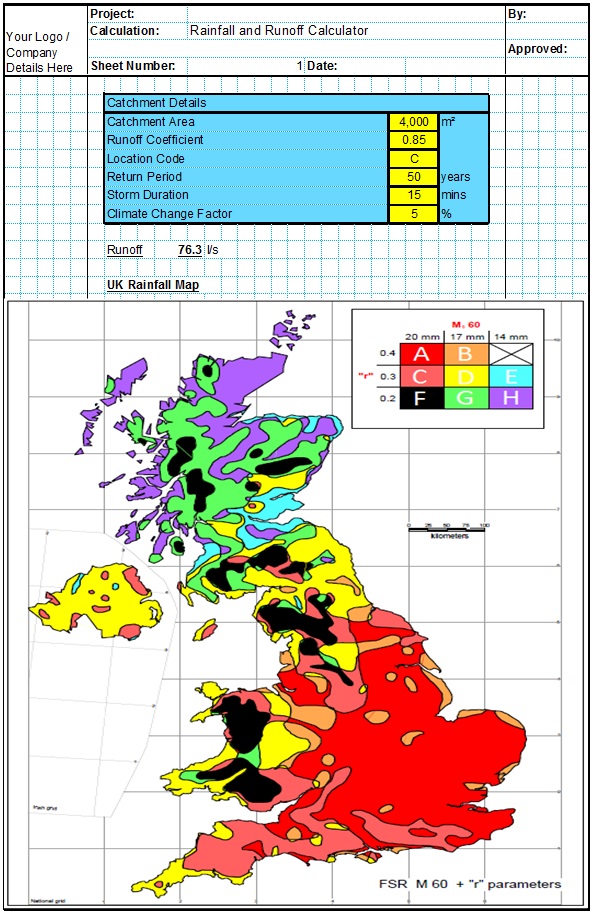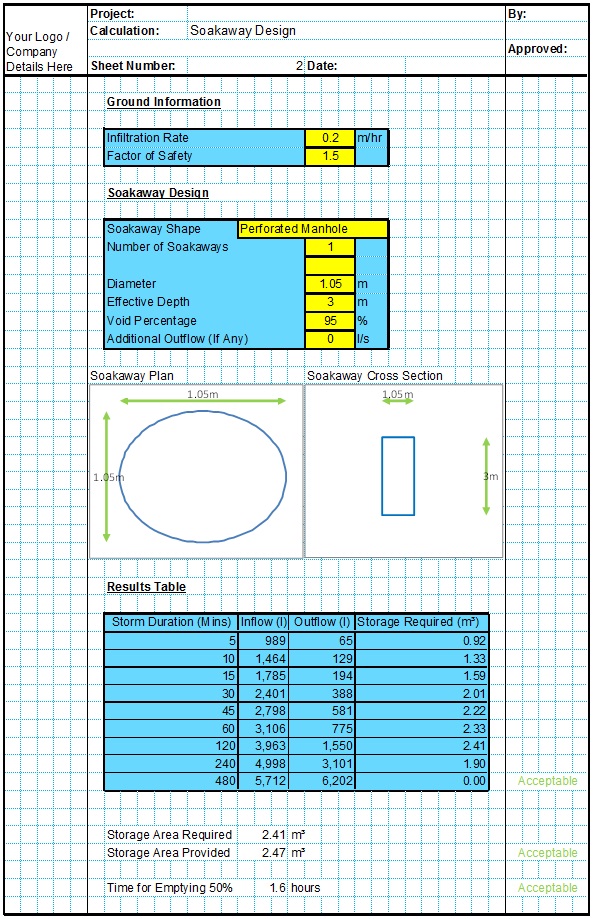In the UK greenfield runoff rate calculations are not generally completed using the Wallingford Procedure modified rational method. The Wallingford Procedure was calibrated using data from large catchments and for this reason is not suited for calculating runoff on small greenfield development sites.
Greenfield Runoff Calculation Methods
The two runoff calculation methods designed to calculate small greenfield runoff rates are IH 124 and ADAS 345. These methods have both been calibrated against data from smaller rural catchments, so both can be suitable for runoff calculations for greenfield sites. Follow the links for more information of these specific methods.
The CivilWeb Rainfall & Runoff spreadsheet includes both IH 124 and ADAS 345 runoff calculation formulas as they are both commonly used for greenfield development site runoff calculations. The Institute of Hydrology Report 124 method is usually used because it includes less limitations and is generally slightly more accurate than the ADAS 345 method. For particularly sensitive developments or where there is a concern over the applicability of the IH 124 method, the ADAS 345 method is often employed as a check with the more conservative result adopted for design.
UK Greenfield Runoff Standards
In the UK it is now standard practice in surface water drainage design that peak runoff rates from greenfield developments should not exceed the original greenfield runoff rate calculation for either the 1 year or the 100 year storm event. For re-development of a previously developed site, the peak runoff rate should be as close as reasonably practicable to the original greenfield runoff of the site for 1 year and 100 year storm events.
In addition the runoff volume calculation from a greenfield development should not exceed the original greenfield volume from the 100 year – 6 hour storm event. For re-development of a previously developed site, the runoff volume calculated from the 100 year – 6 hour storm event should not exceed the original developed condition, and should be as close as reasonably practicable to the original greenfield runoff volume.
Within a new development the drainage should be designed so that no flooding of any part of the site should occur during a 30 year storm event, and no flooding should occur to any buildings during a 100 year event. Flows from an event exceeding the 100 year return period should be channeled through flood routes which minimize risk to people and the damage to buildings.
This usually leads to significant infiltration and attenuation systems being installed on large new developments (see our soakaway calculation spreadsheet here). These requirements have increased the popularity of SUDS drainage design on new development sites.
Related Spreadsheets from CivilWeb;
Runoff Calculator Spreadsheet
This spreadsheet calculates the design runoff flow for a site in accordance with the a number of different methods including the Wallingford Procedure.
Soakaway Design Spreadsheet
This spreadsheet calculates the requirements for a soakaway system and assists the user to design a suitable system.

